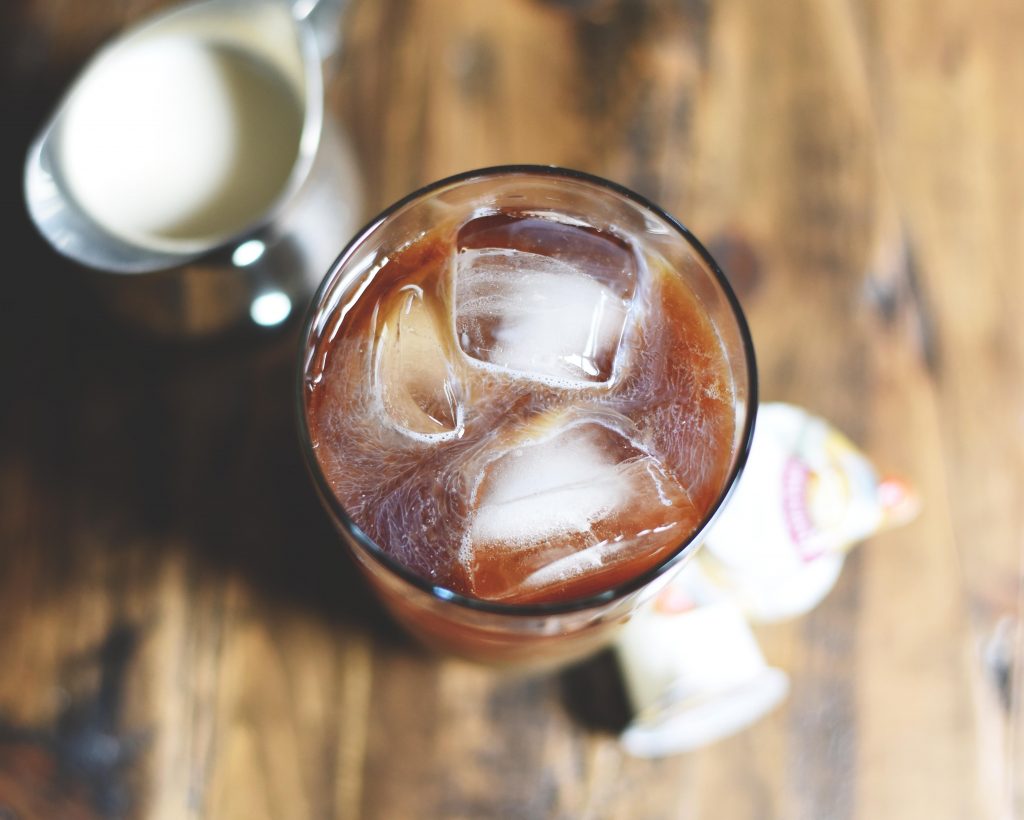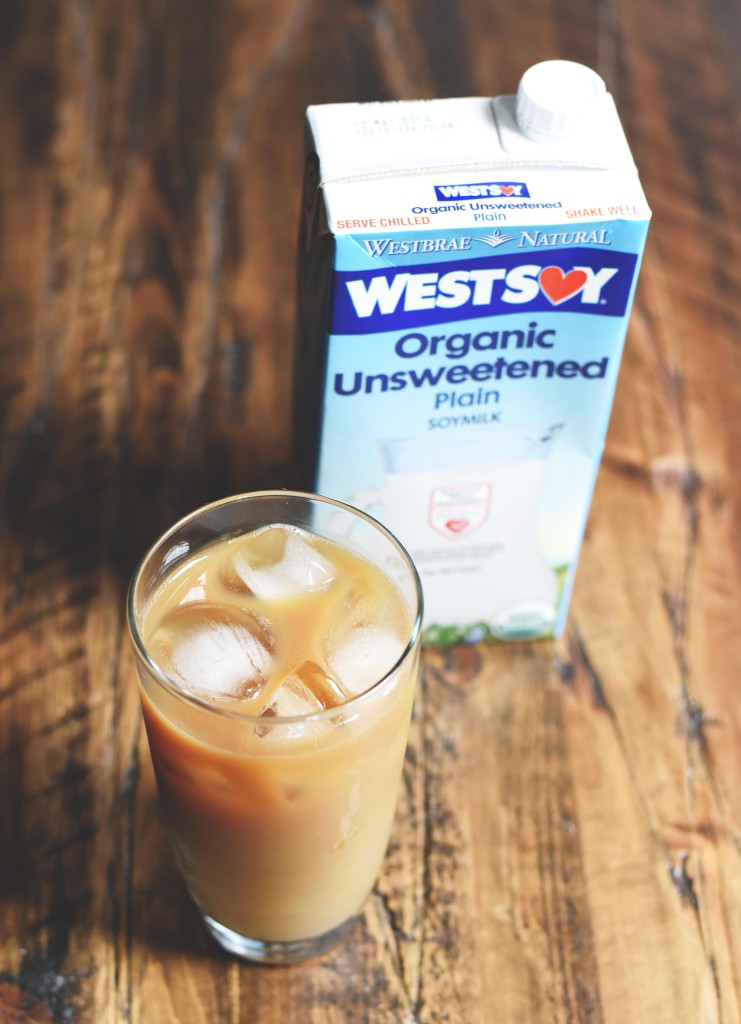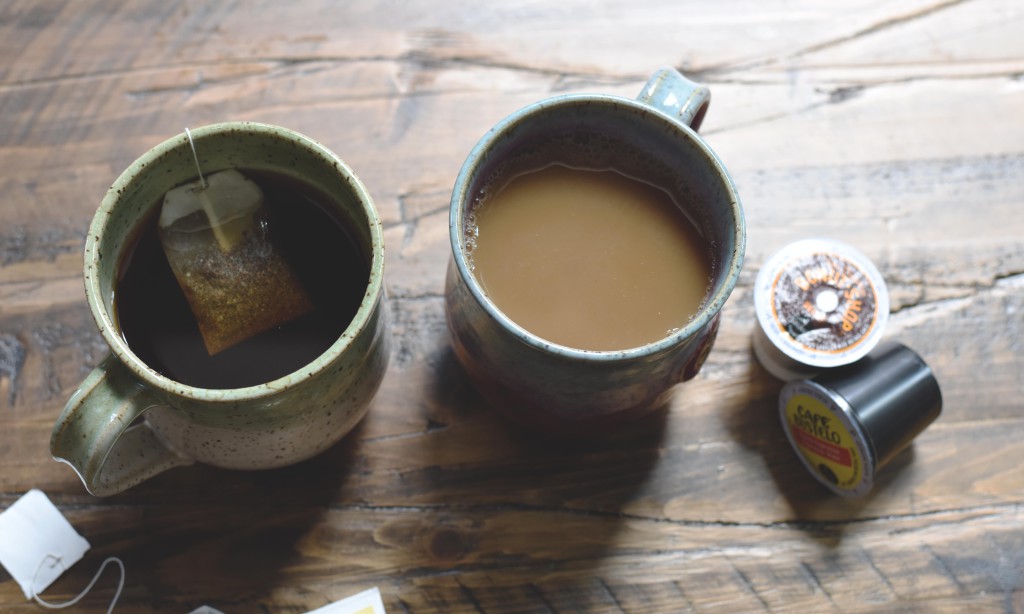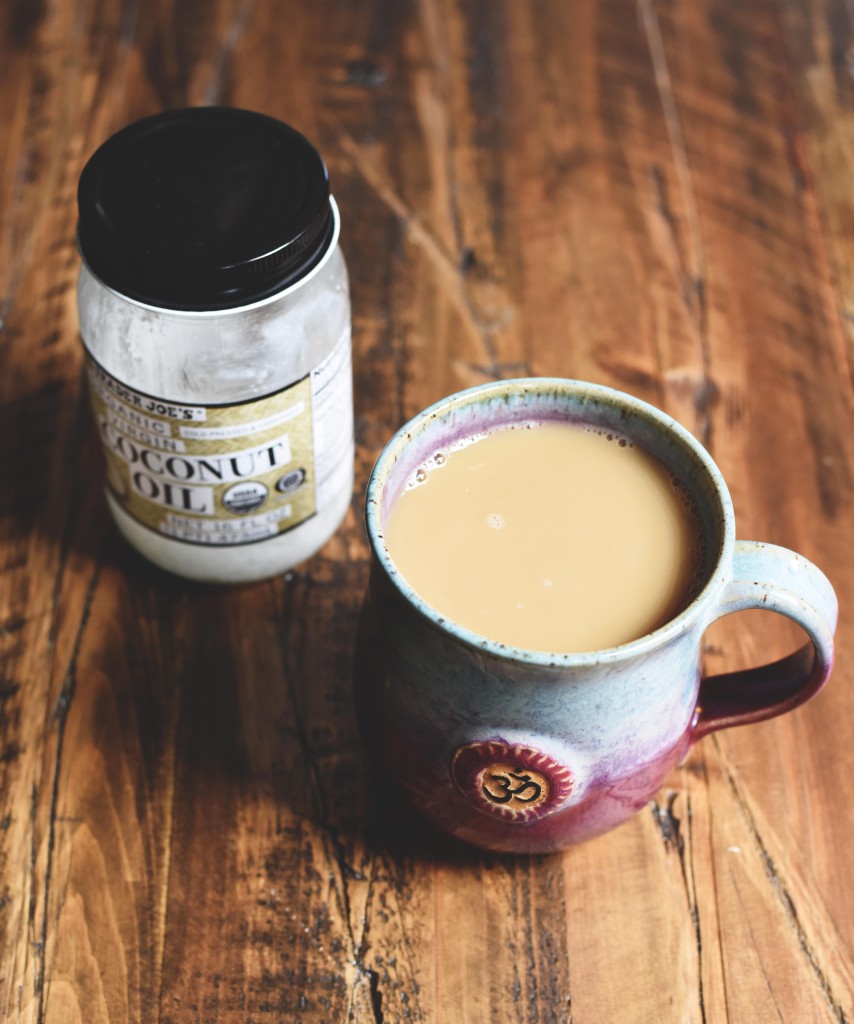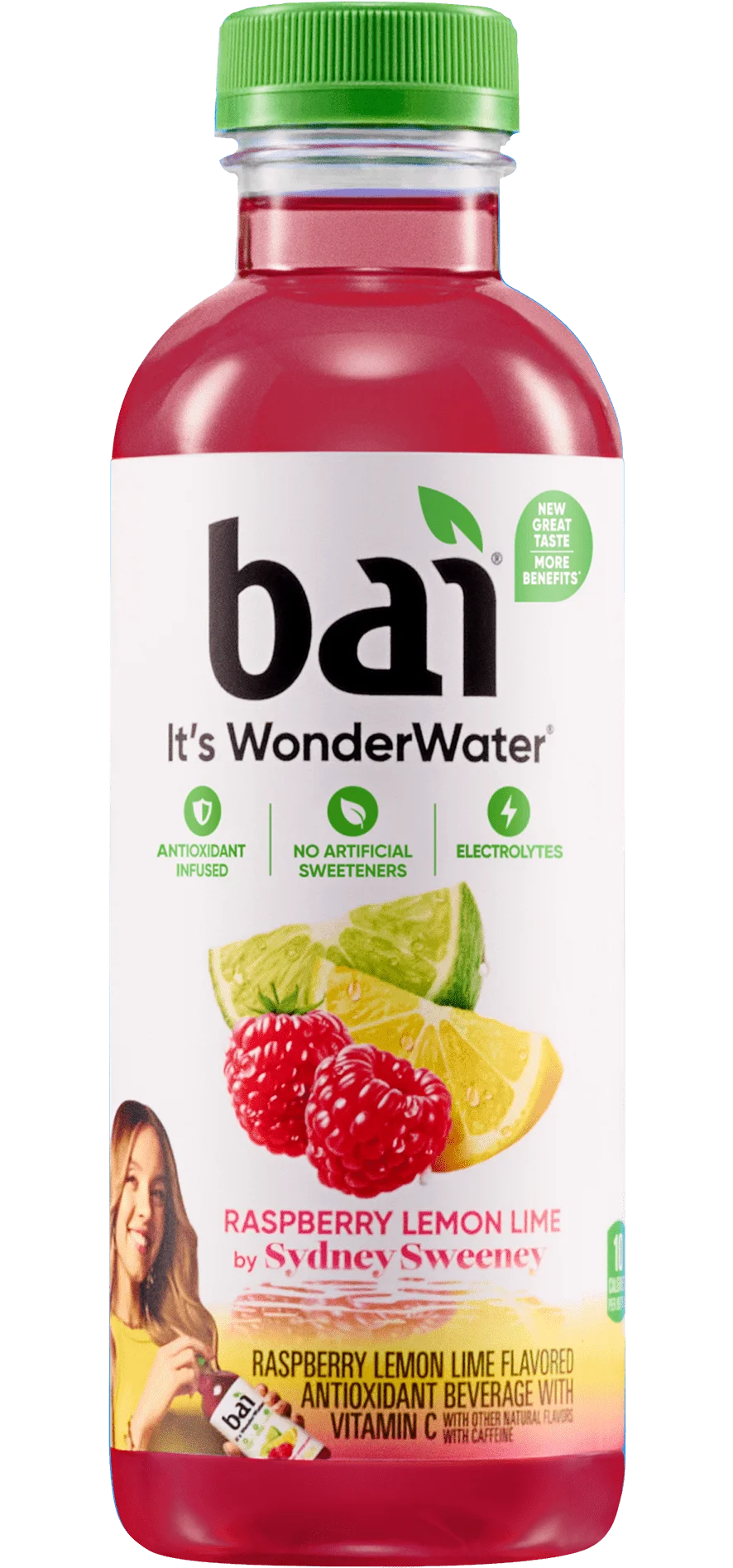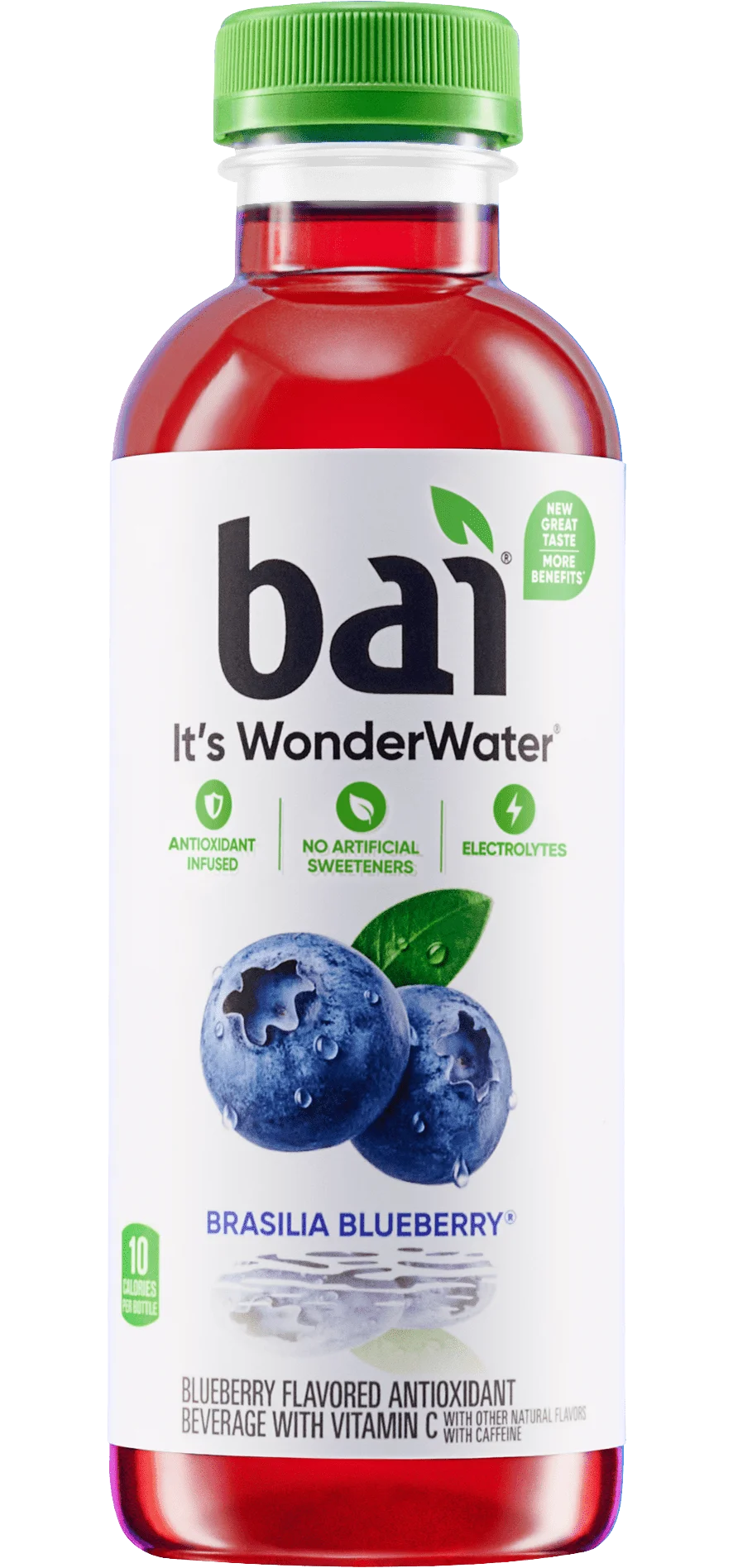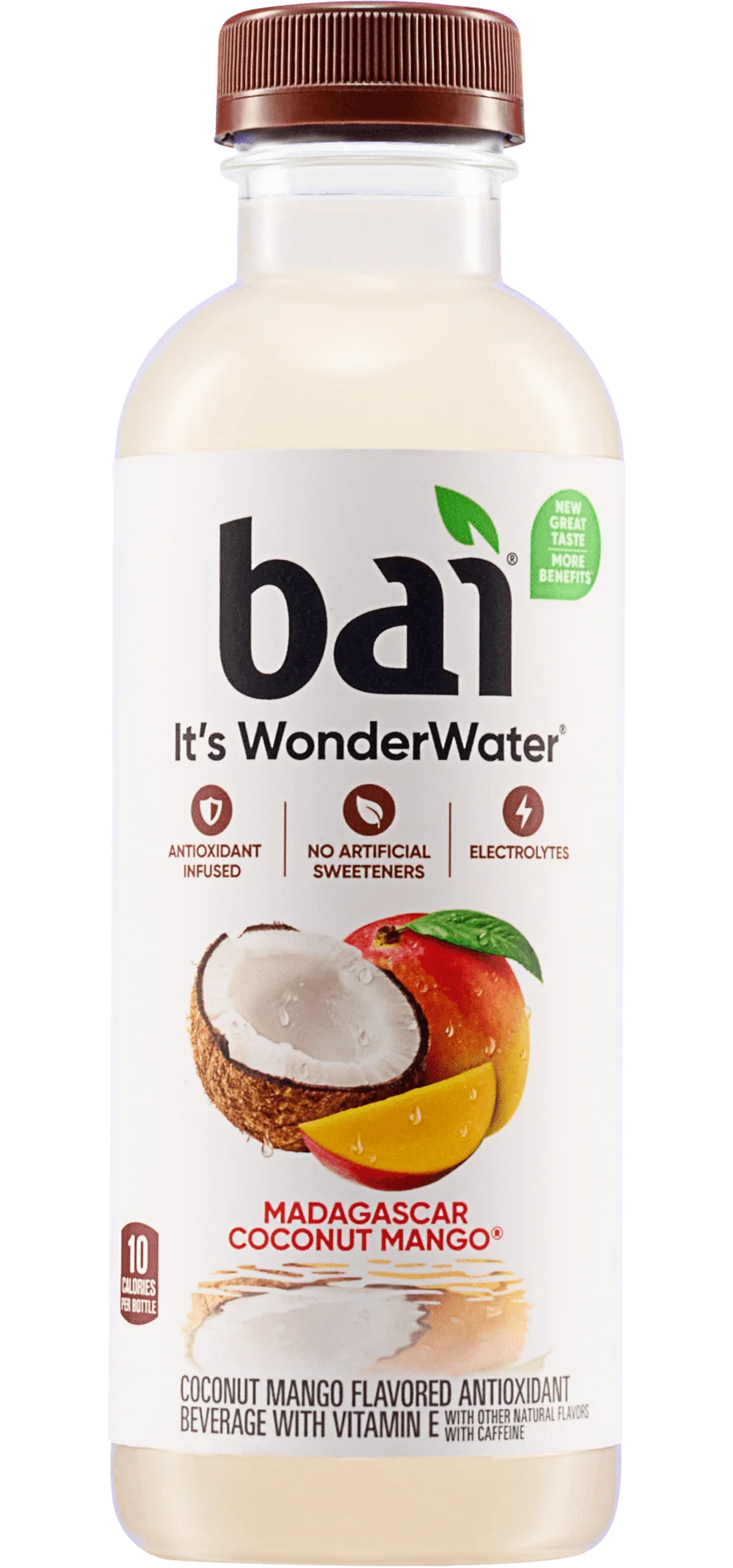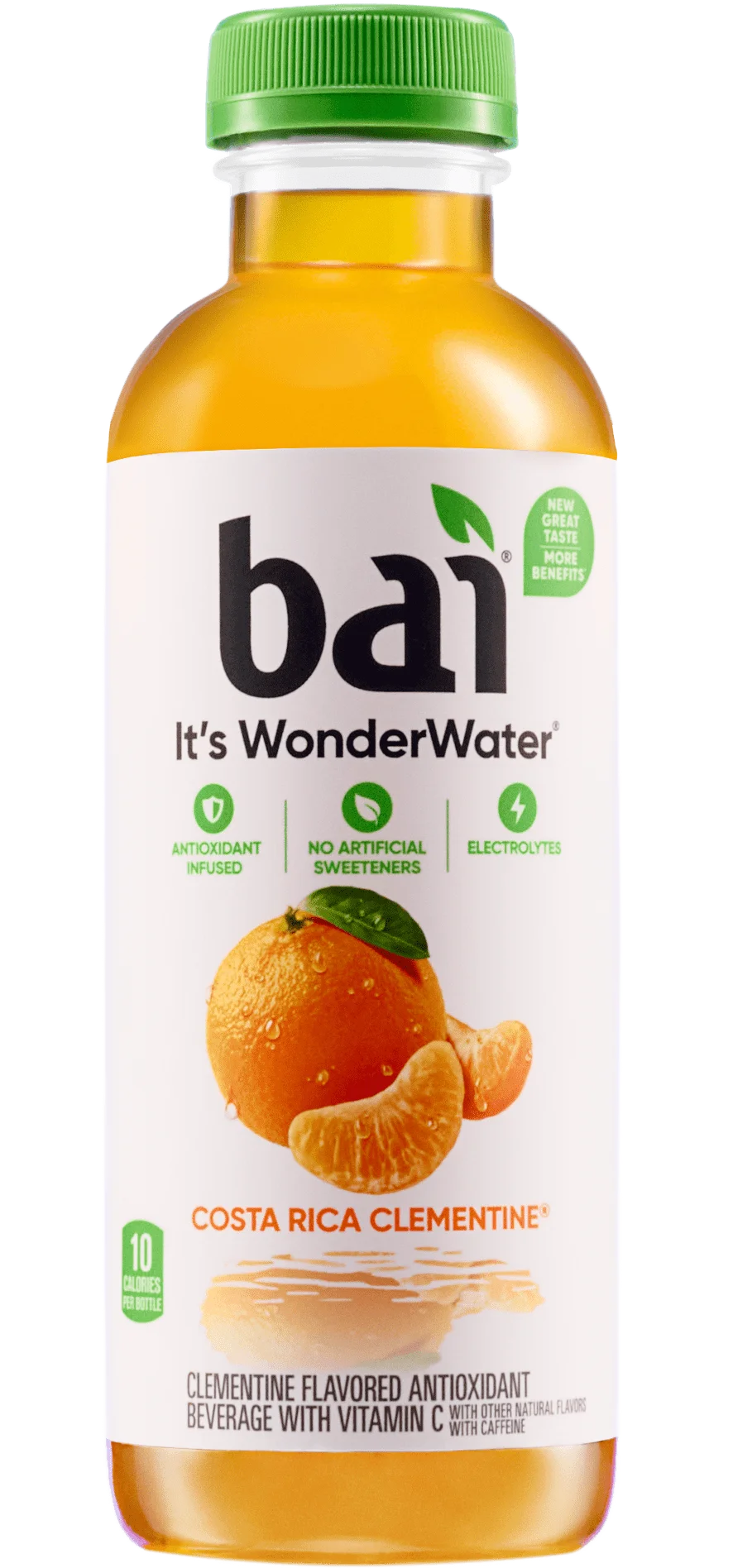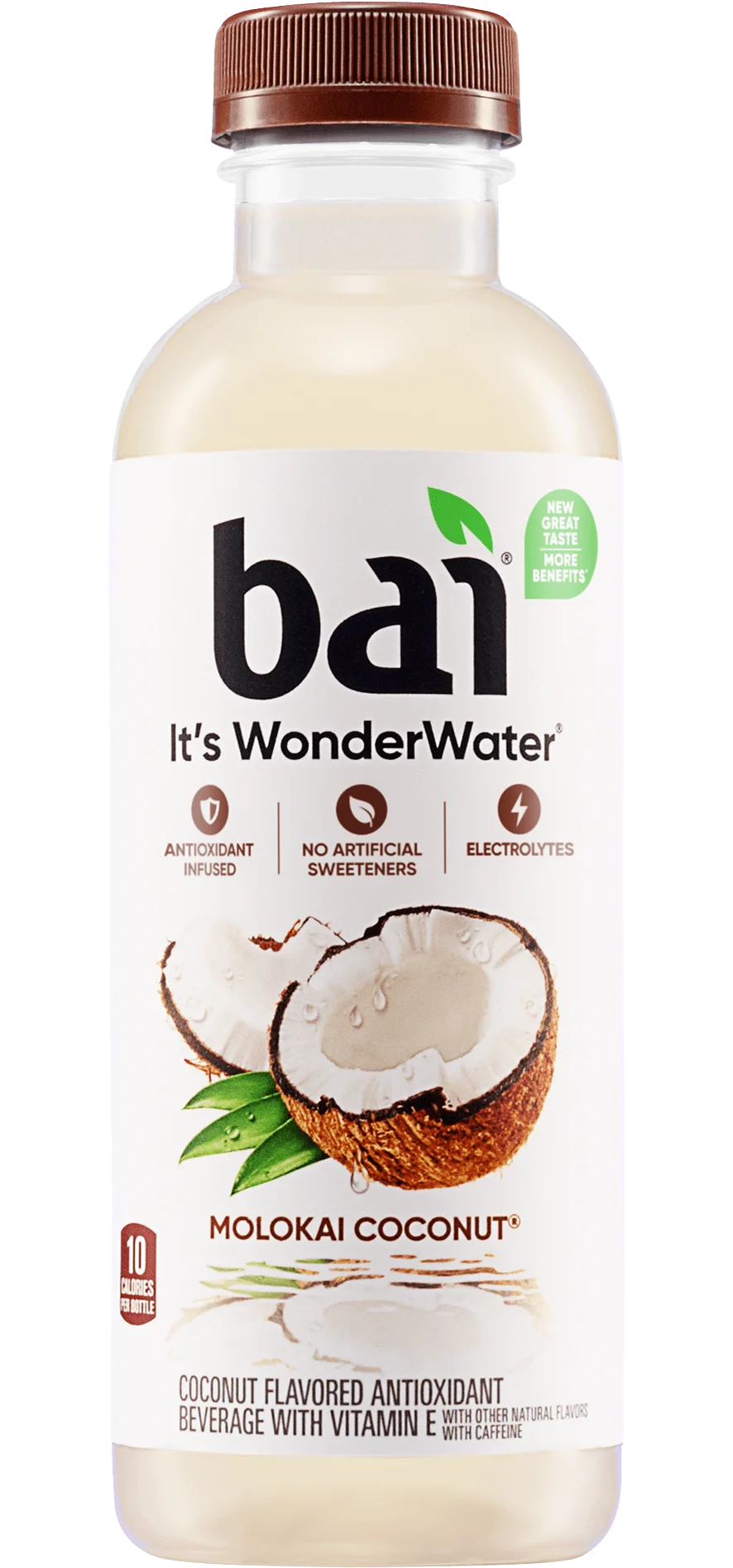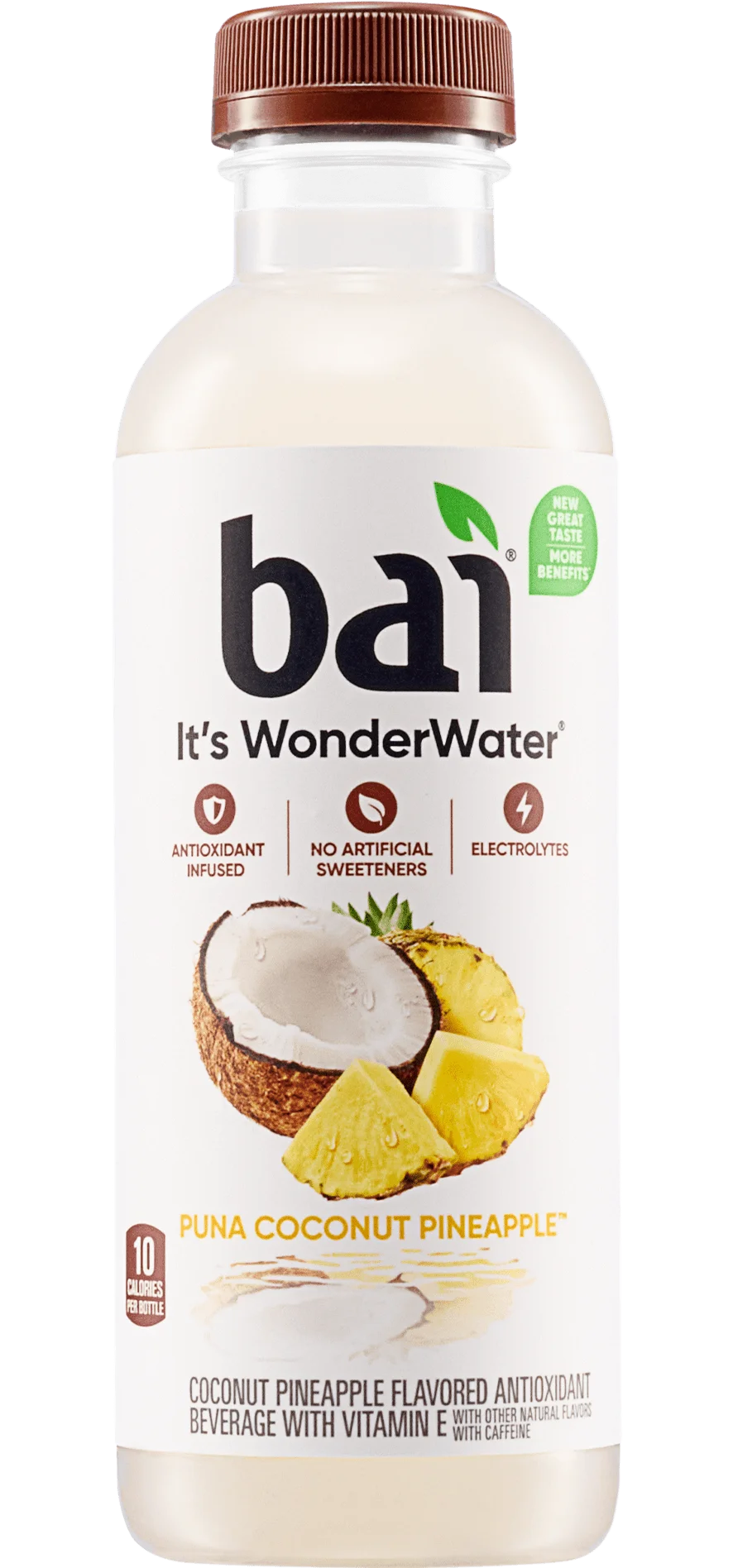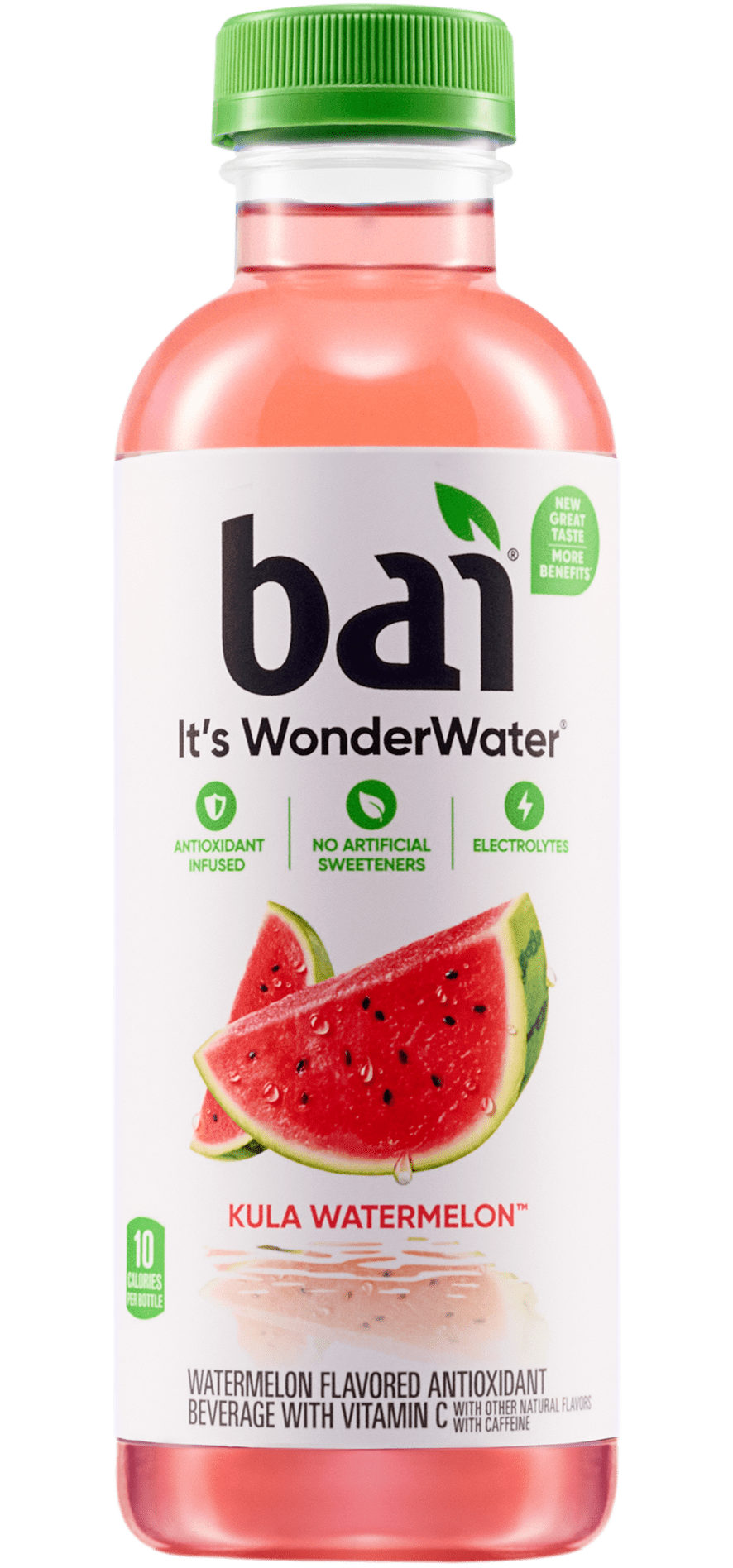It’s Monday morning. You pop (okay, drag) yourself out of bed and into your favorite coffee shop. You order your usual. Whether it’s a double soy macchiato with whip, a black dark roast or a chai tea latte, what you start your morning off with can dictate how your entire day goes.
But what goes into the choices you make at the barista counter? How much does that morning cup have to offer your body? We’re gonna break down the ingredients to help you make an educated order.
Dairy
Pros: Since milk and milk products are naturally produced by cows to feed their quickly growing babies, they’re naturally rich in tons of dietary compounds a calf would need to become big and strong. This includes carbs (in the form of the sugar lactose), fats (including omega-3s and omega-6s), proteins (in the form of casein and whey), vitamins, minerals, etc. The exact nutritional makeup depends on what you pick. Here’s an approximate breakdown of the ones you’ll typically see.
- Cream: 90% fat, remaining 10% mix of protein and carbs
- Half-and-Half: 80% fat, 10% protein, 10% carbs
- 2%: 35% fat, 25% protein, 40% carbs
- Skim: 5% fat, 40% protein, 55% carbs
Cons: As you can tell from above, some dairy products are very high in fat. And since it contains almost double the caloric value as protein or carbs, high fat intake can lead to high calorie intake also. Fat is a necessary (!) part of a healthy diet, but the type you consume is also very important. Although some of what’s found in dairy are beneficial unsaturated fatty acids, saturated fatty acids are also present. And the rumors are true: a diet high in saturated fat can have harmful effects on your heart health. Some dairy products can also cause acidic build-up in the gut, and long-term consumption of non-fermented dairy products (fermented products include yogurt and cheese) is also linked to chronic inflammation. Unfortunately, a lot of dairy products also come from cows that are treated with antibiotics and pesticides, which can lead to dangerous resistant bacteria down the line.
The Choice Is Yours: If you choose to lighten up your cup with a dairy product, do what you can to make it one that’s low in fat and organic so you know no antibiotics or pesticides are present.
Soy
Pros: Soy is a great option for people who have a milk allergy, are lactose intolerant, or choose to avoid animal products. It contains roughly 30% fats, 45% carbs and 25% protein and is a good source of a group of antioxidants known as isoflavones. In some studies, these compounds have been shown to help prevent bone loss and certain types of cancers, and can help lower bad cholesterol (LDL) and blood pressure.
Cons: Frequent consumption of soy is not recommended by some nutrition professionals for the same reason that it is recommended by others. Isoflavones are within a category of plant hormones called phytoestrogens because they closely mimic the chemical structure of estrogen. Much more research has to be done, but some early studies suggest high soy consumption can have a deleterious role in nutrient absorption, weight management, fertility and menopause, and even cancer development because of this.
The Choice Is Yours: There are countless studies, some more recent than others, on how soy affects your health. Many of these analyses contradict each other, so the truth isn’t so cut and dry. If you feel like looking further into this info yourself, try starting here, here or here. Simply having a drink with soy milk each morning is probably perfectly fine, but limiting your soy intake is also a safe bet.
Caffeine
Pros: C’mon, do we really need to tell you what the big pro is? Chemically, caffeine blocks the receptor of the molecule that signals for tiredness. And no reception= no tired feeling. Voila! Some experts even suggest that caffeine can play a role in preventing neurodegenerative diseases down the line, too.
Cons: Caffeine doesn’t actually give you energy, it just keeps your brain from realizing that you don’t have any. So once the effects of caffeine are gone, you feel tired (and then some) again. This is what coffee lovers know as ‘the crash.’ Experts suggest that the average healthy adult should limit his or her caffeine intake to 400 milligrams per day. If that number means just about nothing to you, you’re not alone. So here’s a list of common drinks that could play a part in filling your quota:
- Starbucks Espresso: 150mg
- Grande Starbucks Hot Coffee: 330mg
- Grande Starbucks Iced Coffee: 165mg
- Medium Dunkin Donuts Coffee: 178mg
- 16oz Decaf Coffee: 10-25mg
- Yerba Mate Tea: 85mg
- Black Tea: 30-80mg
- Green Tea: 35-50mg
- Coca-Cola: 34mg
- Your Favorite Bai Drink: 35mg
Studies also show that a large intake of caffeine in a short period of time (usually about 300mg) can lead to higher urine output. So even though the coffee you’re drinking is almost entirely water, your body may not be absorbing it.
The Choice Is Yours: Keep track of how much caffeine you drink throughout the day. If you rely on it to keep your productivity steady, try not to use up a whole day’s worth in the morning. If a nice hot coffee is what gets you movin’ and groovin’, consider opting for a smaller size. If you feel the crash coming on, look for a beverage with a smaller (but still significant) amount of caffeine to help keep you riding your buzz. A Bai5 can do wonders for that 2 pm slump (or even for the 9 am one). We’re talking from experience here.
Coffee vs Tea
There’s no doubt that you’ve heard proponents of both try to explain why their drink of choice should be everyone’s go-to. Here’s a little insight into why someone’s fave is their fave.
Green Tea: Green tea leaves are mature leaves that are sold either fresh or dried. Tea leaves contain polyphenols, which are a subcategory of antioxidants. However, the older the leaf, the less polyphenols are present. This is why white tea (immature tea leaves) is considered to have the strongest antioxidant power. These polyphenols are widely believed to have anti-inflammatory properties, which help defend against arthritis, stress, and even the development of some cancers. It also may help retain bone density. A potential downside of tea is that it contains tannins which can interfere with iron absorption if you drink it with or after a meal. Drinking it before you eat seems to have no effect, though.
Black Tea: Black tea is simply green tea leaves that have been fermented to enhance flavor. But during this process, some polyphenol power is lost. And contrary to popular belief, black tea doesn’t innately have more caffeine than green or white tea does. Caffeine levels in tea are affected by many factors, including the environment the plant was grown in, what parts of the leaf were used, steeping time, and whether or not it’s in a bag. The typical black tea blends you see in coffee shops, like ones from Lipton or Tazo, are usually specifically designed to be high in caffeine in an attempt to compete with coffee. Black tea leaves are the ones used in chai. And if you’ve heard of oolong, it undergoes the same fermentation process that black tea does, just not for quite as long.
Herbal Tea: Unless you’re drinking Yerba Mate tea (made from a plant other than the tea tree so it’s technically considered herbal), which you can see has a good dose of caffeine, herbal tea won’t give you any sort of buzz. There’s no one formula for what goes into it, but many blends do boast health benefits like antioxidants, stress relief and bloat reduction properties.
Coffee: As you can probably tell from above, coffee is a much more significant source of caffeine than tea. But what you may not know is that it’s also a more significant source of flavonoids (the group of antioxidants that polyphenols are a part of). A cup of coffee is more antioxidant-dense than your typical cup of green tea. In fact, coffee is the #1 source of antioxidants in the typical American diet, largely because of the high quantities people drink on a regular basis. But don’t go out pounding cups all day long after reading this- not only would you be setting yourself up for a killer crash, but it’s not great for your heart either. Stick to drinks that have lower doses of caffeine but still have substantial amounts of antioxidants to get your day-long fix. Perhaps your favorite 5-calorie antioxidant infusion drink? Coffee can also cause the blockage of iron absorption in the same fashion that tea does. Unfiltered coffee has also been shown to possibly raise LDL levels.
Bulletproofing
If your mind immediately goes to an image of your mug wearing a kevlar vest, we feel you. Bulletproofing is a fairly new trend, where Medium Chain Triglycerides (MCTs) are added to a cup of coffee or tea.
A typical bulletproof coffee is usually made in a blender and includes:
- 1 cup brewed coffee
- 1 tbsp grass-fed butter
- 1 tbsp MCT oil
- Since coconut oil has the highest percentage of MCTs of any naturally-occurring oil, it can be substituted. It’s also more likely to be in your grocery store.
Pros: The big plus of bulletproof coffee is the increased energy levels its drinkers claim to experience; MCTs are especially easy for the body to absorb and use as fuel. And while you may assume that easy fat absorption= easy weight gain, that’s actually been found to not necessarily be correct. MCTs have shown to be helpful for weight loss, in fact. Experts say this is because they have to ability to increase satiety and metabolic rate.
Cons: Since oils are so high calorie, it’s not an uncommon practice to completely swap out a typical breakfast for a bulletproof coffee. However, doing so eliminates essential nutrients that a well-rounded breakfast would otherwise provide, like protein, vitamins and minerals. There’s also controversy about the safety of consuming such high amounts of saturated fat each day.
The Choice Is Yours: If you feel more energized than usual after drinking a bulletproof coffee, great! Just have a small protein-rich breakfast alongside and keep an eye on your overall saturated fat intake over the course of the day.
Sweeteners
Head on over to our post on coffee shops’ common options to gather the knowledge you need. Be wise about what exactly brings that lick of sweetness to your cup.

